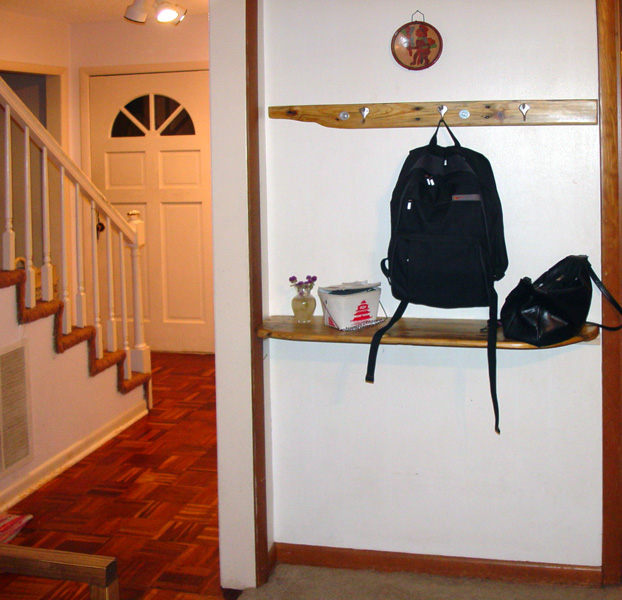Introduction
I was curious this evening about what is the strongest wood. I recently did a project with cottonwood (poplar) and Sweetgum
and
wanted to know how it compared to other woods. The genome of poplar was chosen
to be one of the first trees sequenced, presumably because of its commerical
value to the paper industry.
Cottonwood
poplar has 40,000 genes
on 19 chromosomes. People have 36,000 genes on 23.

Most of the wood used was recovered from a loading palette, at the urging of a certain young person. It had interesting grain, and sanding revealed a collage of history of nailholes, cracks, water stains and character. A passer-by commented that palettes were made from Sweetgum because it was the cheapest wood available, and that it tended to be weak. I was curious as to whether this remark was true. I was also curious about the fabled Sitka Spruce. Few stands of this wood remain in the Northwest, as it has been harvested since WWII for airplanes. Is it claimed to be the strongest wood for its weight.
Results
Some surprising results from the spreadsheet shows, the results are interesting.
1) Live oak is the strongest wood for its weight followed by black locust and the hickory family.
It has huge compression strength.
2) Cottonwood balsam poplar is almost the weakest available for its weight, coming in 109 out of 111 types of US tree types with a strength of 1.3
3) Sweetgum was 88th on the list
4) Sitka spruce is 53th on the list!
5) Mountain Hemlock is the first softwood on the list, at position 13.
6) Paper birch is last on the list.
7) there
was approximately a factor of two difference.
Live oak is 2.4 strength to weight, while paper birch is 1.3.
Methodology
Wood mechanical properties were obtained from here.
The crush strength parallel to grain, perpendicular to grain and
shear strength
were made specific by dividing by their density. This gives a strength to
weight ratio.
These strength to weight ratios in three directions were normalized so that
each strength
type was of the same order of magnitude.
A vector length was computed in this specific normalized
strength space to find the
overall composite strength of each wood type.
The list was sorted by this specific normalized wood strength.
I believe these results are valid, since most structural
failures occur when a beam
is placed in bending. The fibers are assumed to fail first in compression.
To the extent that assumption is true, these results should be fairly accurate.
To improve the results, we would need tensile as well as compressive figures for the woods.
Conclusion
According to these results the strongest and lightest wood airplane would be built from live oak.
You would not use very much, you would laminate it, and it would be kiln dried.
Working with oak is hard on tools, which may be why the
softwoods find a preference.
In that case Mountain Hemlock would be an option.
Sitka spruce grows long, straight with few blemishes, so there are other factors
than
strength
to consider.
However, lamination tends to make blemishes less significant.
- Van